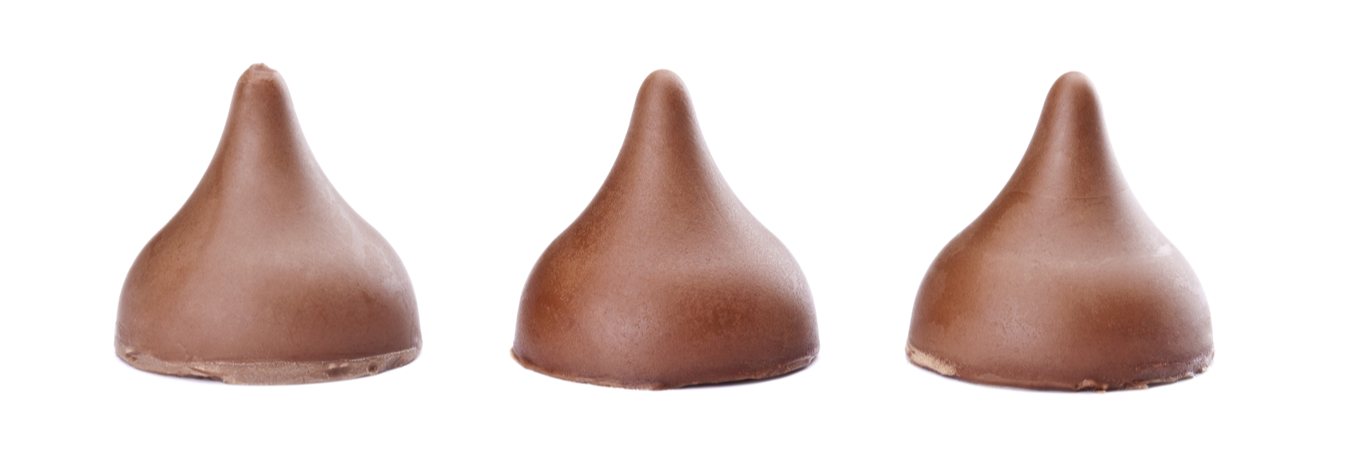Updated 6/5/24
“Americans consume 2.8 billion pounds of chocolate each year, or over 11 pounds per person.” That’s a LOT of chocolate. And, if I’m honest, I most certainly do my part to meet that statistic. I’ll pick chocolate over any other sweet flavor, bar none.
It’s a constant for any season or holiday – think cookies at Christmas, a box of chocolates for Valentine’s Day, chocolate eggs in your Easter basket, s’mores in the summer, and the ubiquitous Halloween candy. Aside from eating it and baking with it, we can also use it for learning.
Trust me. This roundup of STEM activities is pretty sweet.
-
Measuring with Chocolate
Can chocolate kisses be a unit of measure? ABSOLUTELY. Using a nonstandard item instead of a ruler is a great way to experiment, practice, and build understanding with the concept of measurement for little learners. Fantastic Fun and Learning details this activity with extension options and a free printable resource too.
-
Chocolate Chip Excavation
We’re digging into a little geology (or a paleontology direction) with this activity. Do some prework and learn a bit about the excavation process with this quick article from Britannica Kids. And then get hands-on practice plus practice counting and making estimations and predictions with this activity from JDaniel 4’s Mom.
-
Hot Chocolate Experiment
We like hot cocoa because it warms you right up, right? But can you make cocoa with varying water temperatures? What will happen? Will the cocoa mix dissolve? How fast do marshmallows melt? We can find out with this experiment from Mombrite.
Another spin on this: if you’ve checked out the instructions on a pack of instant hot chocolate, it says you can use water or milk. Are there any differences in the end result? A Dab of Glue Will Do walks you through this one. Related: If 2020 brought us something good (and trivially fun) – it is most definitely the rise of the hot chocolate bomb. Read more about the trend and how to make your best version – it’s kitchen science in action!
Related: If 2020 brought us something good (and trivially fun) – it is most definitely the rise of the hot chocolate bomb. Read more about the trend and how to make your best version – it’s kitchen science in action!
-
Chocolate Slime
Slime is a favorite for all ages. Making it is science coming together before your eyes. And super fun too! So, why not level it up with chocolate? Little Bins for Little Hands brings this one to us too. (NOTE:This slime is NOT edible.)
-
Floating Ms
They might not melt in your hands, but can you make the m on an M&M float? Little Bins for Little Hands walks us through this quick and fun experiment as well as the science behind the results.
-
Chocolate Taste Test
Think like a scientist! Set up your experiment and conduct a taste test with some popular candy bars. But don’t just use the sense of taste; use all five senses as you experiment. Little Bins for Little Hands shares the quick idea here.
-
The Science of Lava Cakes
Harvard University teaches physics and other science concepts in a cooking and science course. They tackle the concept of heat diffusion with lava cakes in this video.
Chef Max Brenner outlines the process of baking a lava cake like this: “Most lava cakes ooze on their own given the right recipe. But the real secret is in their size! Chocolate Lava Cakes are often baked in individual molds, small ramekins or even cupcake tins. The batter bakes like a soufflé (rising and then deflating) and the liquid-y center will continue to set after the individual cakes have been pulled out of the oven.” To better understand, we can turn to NPR to explain the science of a souffle, which is all about air and rapid heat. There’s also a cool breakdown of each component of common recipes.
Want to put it to the test? We like this version from Sally’s Baking Addiction.
After all that, if your sweet tooth isn’t satisfied yet, read more about why chocolate chips don’t melt and the perfect science behind chocolate chip cookies. Or, go way back and read up on the history of chocolate. Bite into some technology and engineering and explore how chocolate is made.
Naturally, as a lifelong chocoholic, writing this blog is a true treat. Let’s get on with it – on to the experimenting (and eating)!
Bonus fun fact: It has actually snowed chocolate. Really. A Lindt factory showered this town in Switzerland with chocolate.


